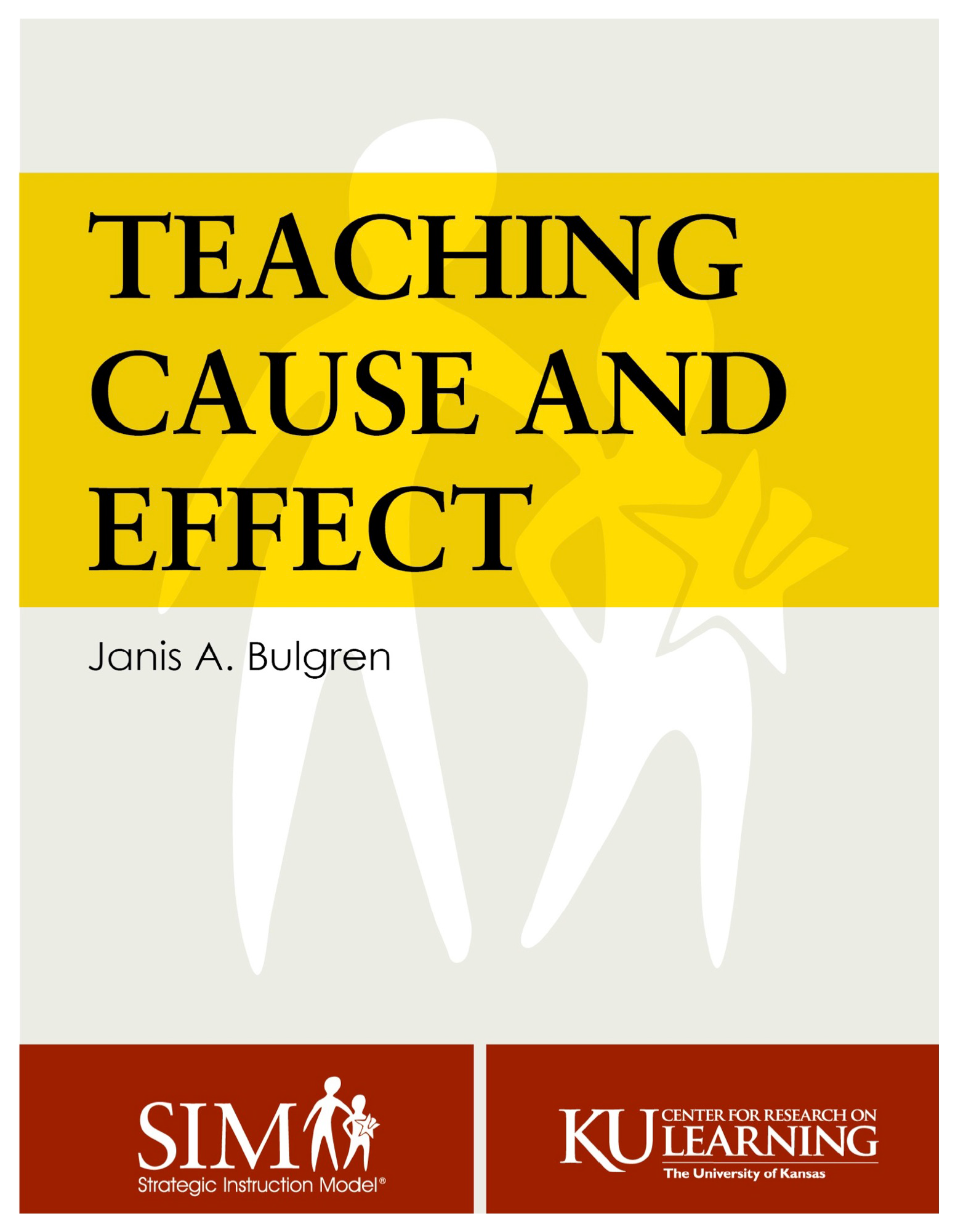
Publication Info: University of Kansas, 2014
Teaching Cause and Effect Resources:
VIDEO
- 2019 SIMposium: Teaching Writing with the Cause and Effect Routine - Graner
Video Presentation Florida Standards
The Teaching Cause & Effect Routine can be useful to content teachers working on building students higher order reasoning and thinking muscles, but it can also be used effectively to help them produce an essay in which they support their reasoning. Instructions are provided at the end of the guidebook for writing and essay. We will practice the practical aspects of writing that essay - useful to your teachers learning how to use this routine.
- 2014 SIMposium: Teaching Cause and Effect - Bulgren
- 2014 SIMposium: CE Devices ad Essay Writing Supports Video, Handout 1, Handout 2
- Teaching Cause and Effect - Bulgren
PPTs
- Teaching Cause and Effect presentation (ppt) 2021
- Teaching Cause and Effect blank device (ppt)
- Teaching Cause and Effect templates - Minarik (google share)
- Guide Google Slide: https://docs.google.com/presentation/d/19mwaretOxMAQ2TuYvDQDFgLE7_HEi9Ei1zy7_IkEjBk/copy?usp=sharing
MORE
- Access Florida SPDG LiveBinder Assets (Key: CE TCE)
- Access Content Enhancement Routine Checklists
- Description of Teaching Cause and Effect from the SIM website
Stratenotes/Strategram
- Stratenotes Volume 22 No. 2 November 2013
MICROCREDENTIALS
- Example HOTR Classroom Activity for Cause and Effect Guide - Sue Woodruff
-
Andrea is the 9th grade ELA teacher in a very small high school in rural Ohio. The high school is literally sitting in the middle of soybean and corn fields. Only about 25% of their kids go on to higher education, but they are working on that. The entire staff of the HS is really good in the high school (not so great in the middle school.) Many of these teachers have been doing Content Enhancement for several years, so that is why we wanted to add the higher order reasoning routines for them to try out. I was able to visit Andrea’s 9th grade at-risk class where she did this Cause & Effect Routine in a masterful way. Most of the boys leave after her class to go to the county vocational school. I think there were about 20 kids in the class. Here’s how it went:Leading up to 3/31 Lesson:On prior days to prepare for doing this routine, the class read two relatively short articles that were synopsizes of two Supreme Court cases. They also did a small group assignment where they were assigned a case, and the small groups had to research and create a poster that answered several guiding questions. Students put the posters on the walls around the classroom, and then they were asked to do a gallery walk to familiarize themselves with the basics of the other cases. They were to jot down some notes about each case.
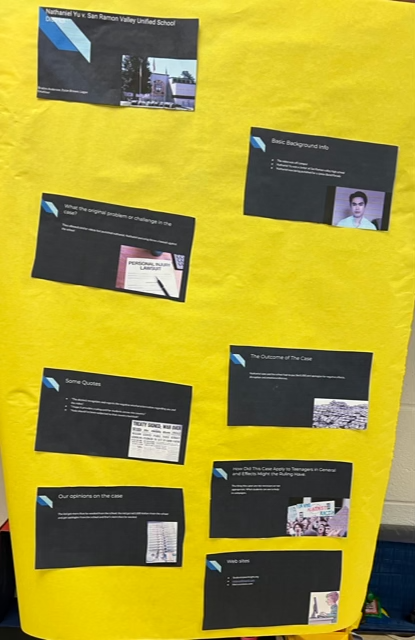
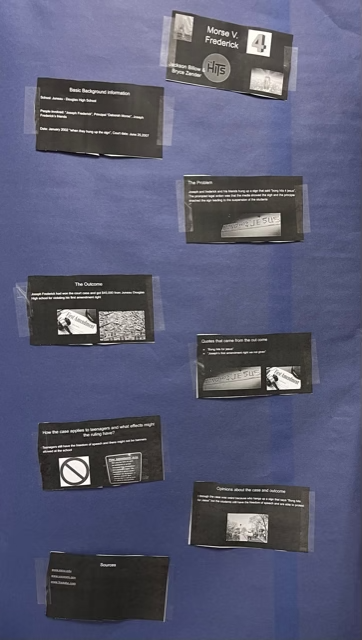
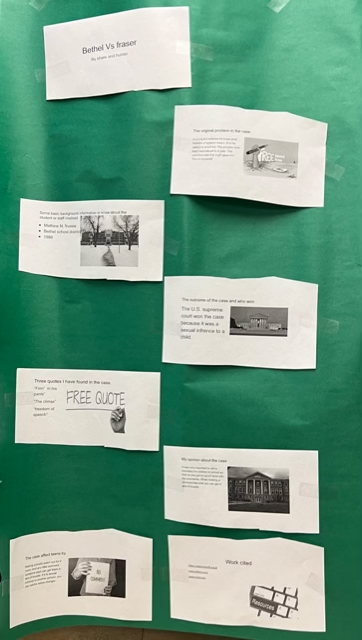
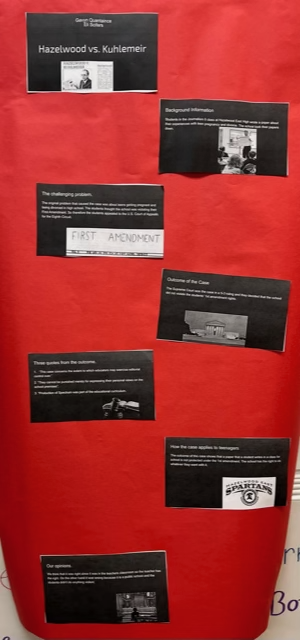
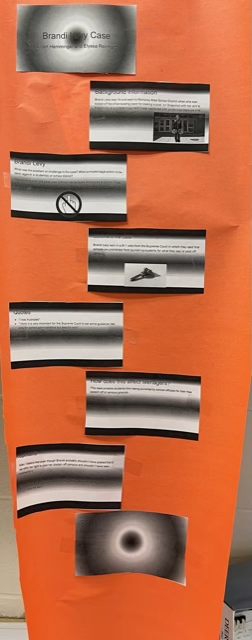 1st 10 minutes:Students were asked to look over their notes and visit any posters that they hadn’t had time to look at yet.Following 30 minutes:Andrea gave each student a guide with the following prompts:
1st 10 minutes:Students were asked to look over their notes and visit any posters that they hadn’t had time to look at yet.Following 30 minutes:Andrea gave each student a guide with the following prompts: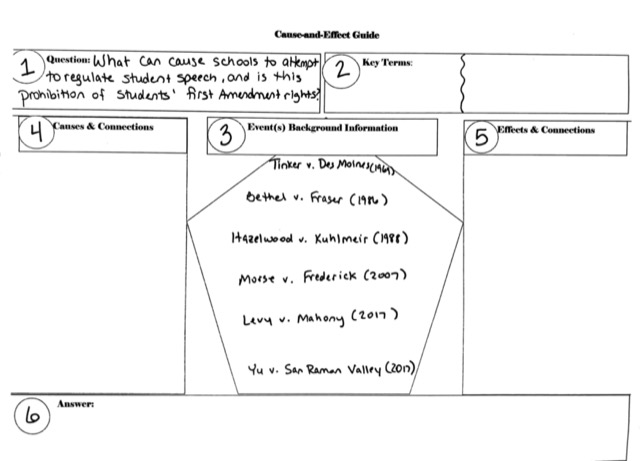 Andrea masterfully went through the routine with the students. The students were extremely engaged as each of these cases related to high school students taking an issue to the Supreme Court. The content was genius. This work is preparing students for writing an essay. Andrea is also a master at the writing strategies, so that gets embedded once the kids start writing which is planned for next week. The guide was completely co-constructed except for the answer. This class is shorter than the regular bell schedule because these are the voc kids. She moved quite quickly through the answer with them in order to finish, but I am sure she was going to spend a little more time today debriefing the experience.Here is a copy of the completed Cause & Effect Diagram:
Andrea masterfully went through the routine with the students. The students were extremely engaged as each of these cases related to high school students taking an issue to the Supreme Court. The content was genius. This work is preparing students for writing an essay. Andrea is also a master at the writing strategies, so that gets embedded once the kids start writing which is planned for next week. The guide was completely co-constructed except for the answer. This class is shorter than the regular bell schedule because these are the voc kids. She moved quite quickly through the answer with them in order to finish, but I am sure she was going to spend a little more time today debriefing the experience.Here is a copy of the completed Cause & Effect Diagram: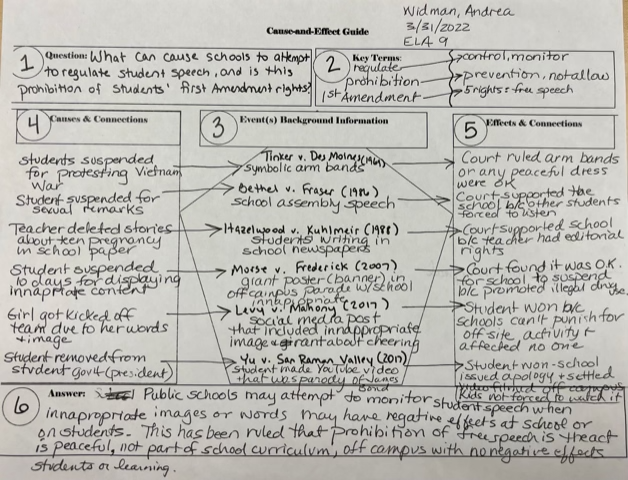 It was such an enjoyable learning experience!
It was such an enjoyable learning experience!
Assets from FLORIDA SPDG Livebinders:
Teacher can access Florida Live Binder assets. Share this link and password:
https://www.livebinders.com/play/play_shared_binder/2028256?play_view=play Password CE TCE
- Cue Do Review
-
The overall instructional process that guides use of the CE device with the Routine’s Linking Steps. This instructional process involves:
Cue: teacher announces the CE routine and explains its use, how it will help students and expectations for student participation
Do: teacher and class collaboratively construct the device using the Linking Steps that “connect” the content to the needs and goals of students
Review: Information presented in the device is reviewed and confirmed, use of the device is reviewed and confirmed, use of the device as a learning and study tool is modeled
- The Routine
- Device Templates
- Device Checklist
- Examples
-
New accordion content
- Implementation Checklist
-
New accordion content
- Examples
- Implementation Checklist
- Topics for Cause and Effect
